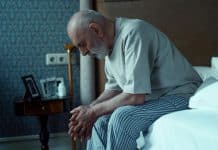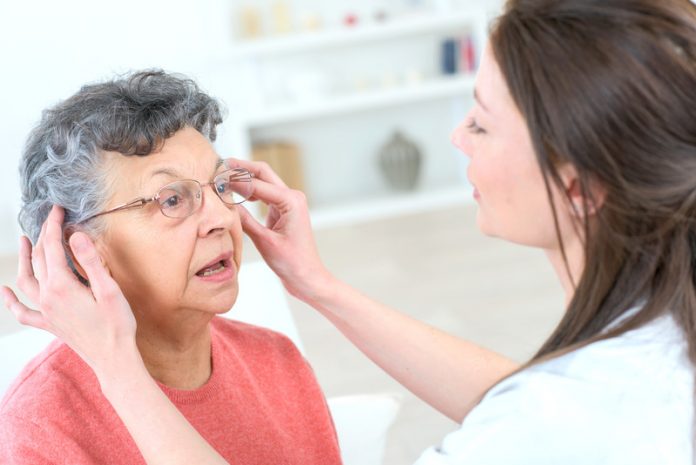There are many common and well-known changes that happen to your body with age. Your bones may feel creaky, your joints sore and your vision might not be quite as sharp as it used to be. When it comes to aging eyes, most of us are familiar with Presbyopia, or aging eye. This condition generally begins as early as your late 30’s or early 40’s and is caused when the lens inside the eye is no longer able to accurately change shape, affecting your ability to read up close. While Presbyopia can be bothersome and a stark reminder that your body is aging, there are many successful treatments available ranging from prescription reading glasses to corrective surgery.
In addition to Presbyopia, your eyes are subject to many other common age-related eye conditions, including:
- Age-related macular degeneration (AMD) – AMD is the leading cause of blindness among seniors, affecting their central vision. This is most often caused when your macula – which is the light-sensitive part of the retina – begins to thin, or when abnormal blood vessels grow under your retina. However, according to the American Academy of Ophthalmology (AAO), early and regular visits to the ophthalmologists can reduce vision loss and in many cases, recover vision.
- Cataracts – Cataracts are the most common age-related eye change experienced by people aged 65 years and older. Cataracts occur when proteins in your lens begin to clump together, making the lens less transparent and causing blurry, cloudy or dim vision. Timely treatment of cataracts, including glasses for early stages and restorative surgery as the condition progresses are very effective and have the ability to restore complete vision.
- Decreased color vision – According to All About Vision, decreased color vision occurs when the cells in your retina that are responsible for normal color vision decline in sensitivity. This age-related decline results in colors becoming less bright and the contrast between different colors to be less noticeable. Currently there is no treatment for this normal, age-related loss of color perception.
- Diabetic retinopathy – This condition most commonly affects diabetic seniors and, according to the AAO, occurs when the small blood vessels inside the retina “swell, leak fluid or close off completely due to elevated blood sugar levels.” Fortunately, diabetic retinopathy can be prevented with proper disease management, including controlling blood sugar levels and maintaining a healthy blood pressure. Regular visits to the ophthalmologists and diabetic retinopathy screening can also reduce our risk of developing the condition.
- Dry eye – As we age, our bodies produce fewer tears resulting in dry eye. This common issue is especially problematic for women after menopause as the hormonal changes cause changes in the eye’s tear production. There are many simple treatments you can try to help keep your eyes moist and reduce irritation caused by dry eye, including raising the humidity level in your home, using artificial tears or taking prescription dry eye medication.
- Floaters and Flashes – According to the AAO, this common and generally harmless condition occurs when the fluid that fills the inside of your eye begins to change. These changes can cause a reduction in fluid, triggering clumps or strands to appear and creating “floaters” or small specks or lines moving in your field of vision. The changes can also cause the fluid to pull away from the back wall of your eye, causing you to see “flashes” or flashing lights or lightning streaks in your vision. While most often harmless, in some cases this condition can lead to retinal detachment and cause blindness. Therefore, it is important to see your ophthalmologist to rule out this possibility if you experience floaters and flashes.
- Glaucoma – This condition is most common in people age 55 and older and damages the optic nerve, leading to loss of side vision. According to the AAO, glaucoma typically shows no symptoms in the early stages, however if this seemingly silent disease is left untreated, it can lead to complete blindness. Therefore, it is important for anyone over the age of 50 to have regular medical eye exams.
While these potential age-related eye conditions may seem worrisome, there are many things you can do to protect the health of your aging eyes.
Check out the following top five tips to care for your vision as you age:
- Protect what you have. Wear sunglasses and eye protection whenever you are exposed to sunlight or working on a task that could potentially damage your eyes.
- Early intervention. Most eye conditions can be successfully treated with early intervention. Be sure to schedule regular visits to the eye doctor to ensure your eyes are functioning as well as possible.
- Exercise regularly. Exercise has been shown to improve eye health by reducing blood pressure and helping with proper blood circulation.
- Get enough sleep. The act of sleep is excellent for the eyes. While you sleep, your eyes experience continuous lubrication and clear out dust, smoke and a host of other allergens that they are exposed to during the day.
- Eat well. Your eyes rely on a variety of vitamins and minerals in order to function well. Leafy green vegetables and foods high in vitamins C and E, zinc, lutein, zeaxanthin and omega-3 fatty acids DHA and EPA have been proven to protect against AMD and other eye diseases.
Image Credit:
(c) Can Stock Photo / photography33

























